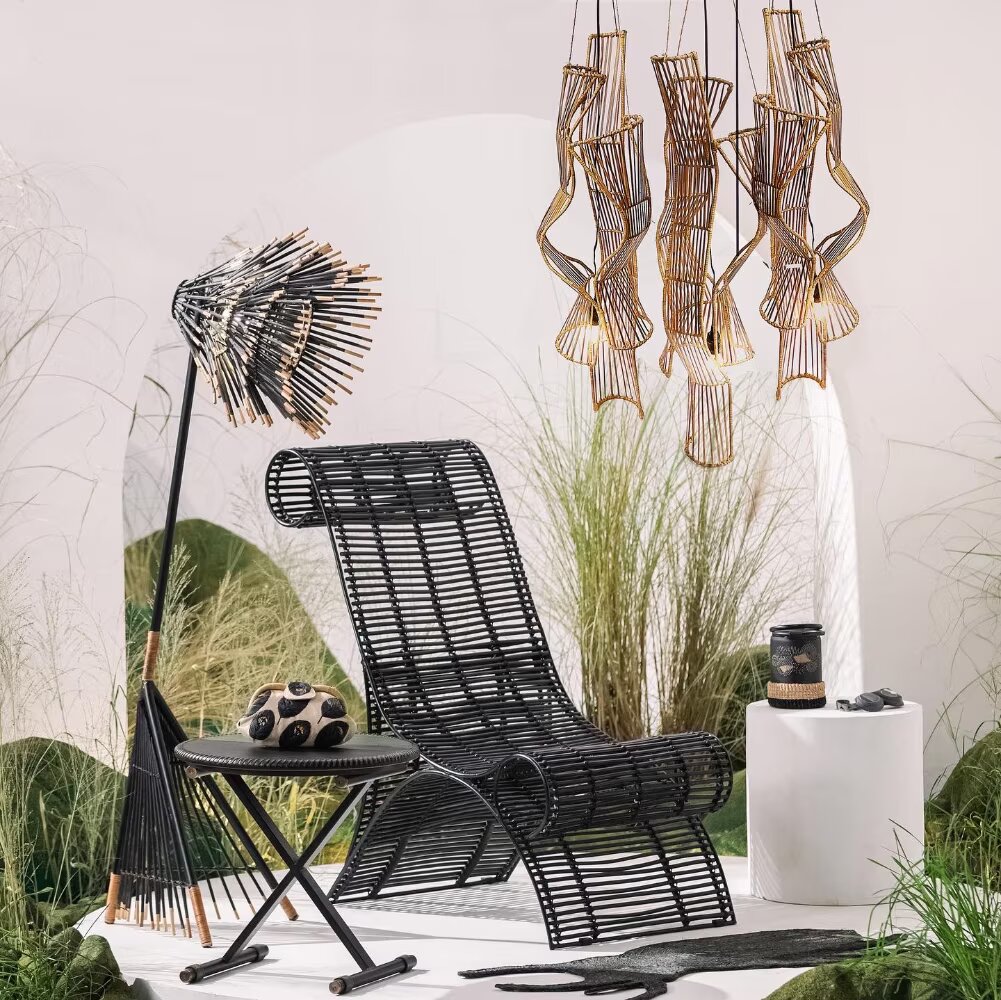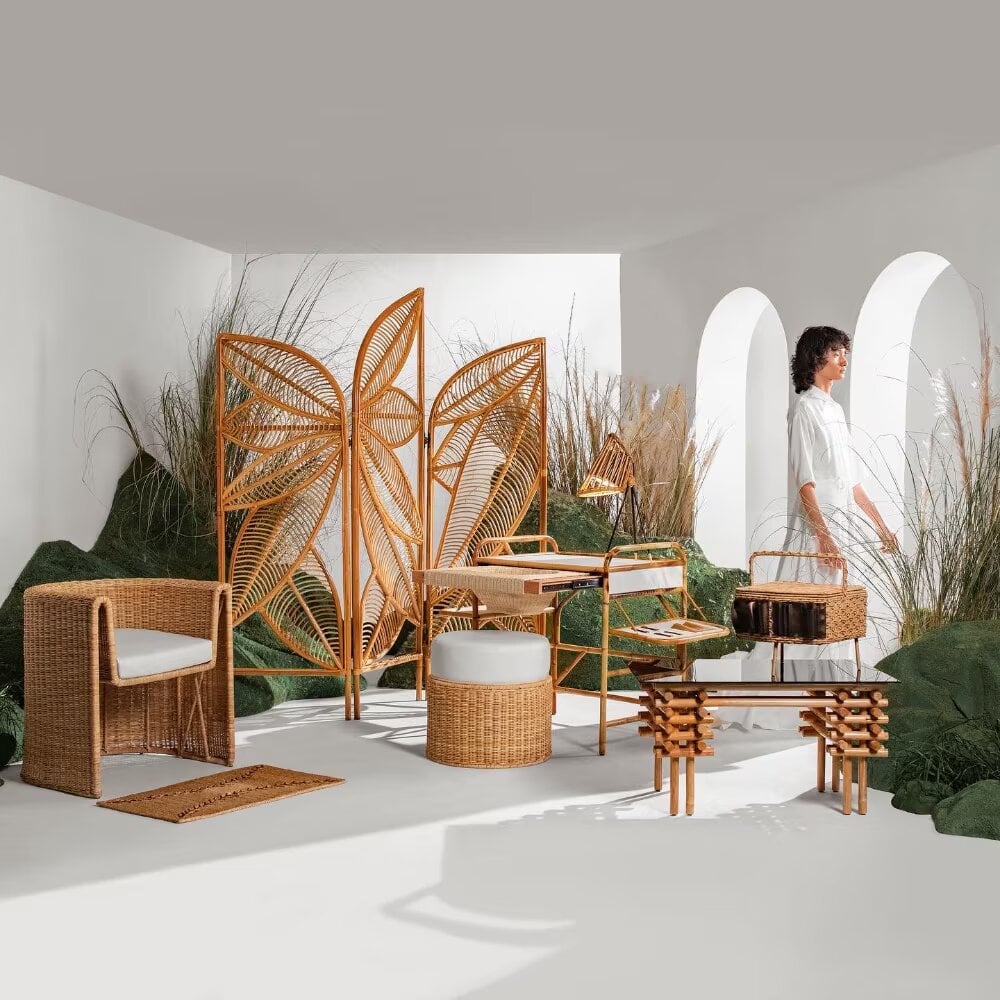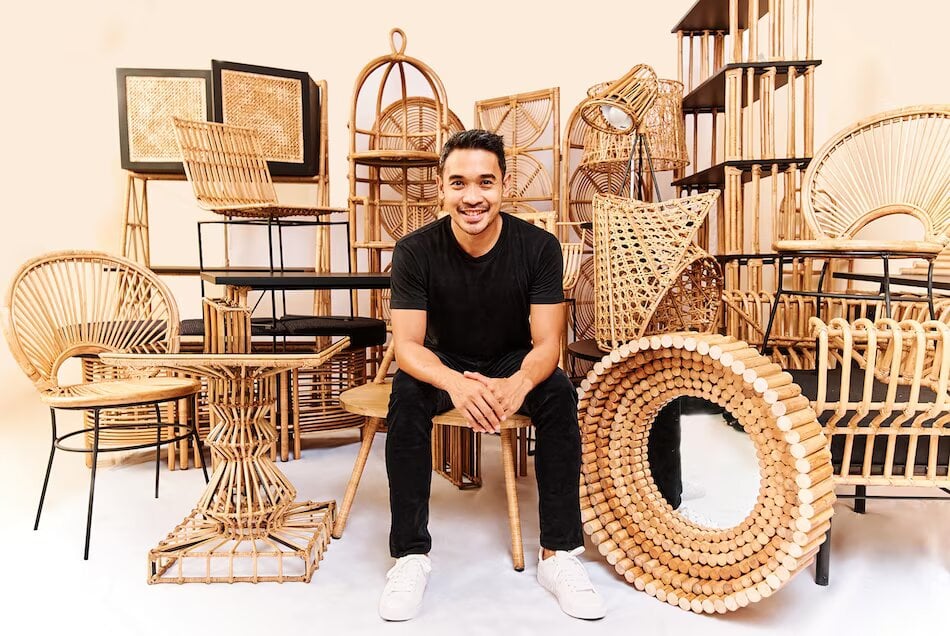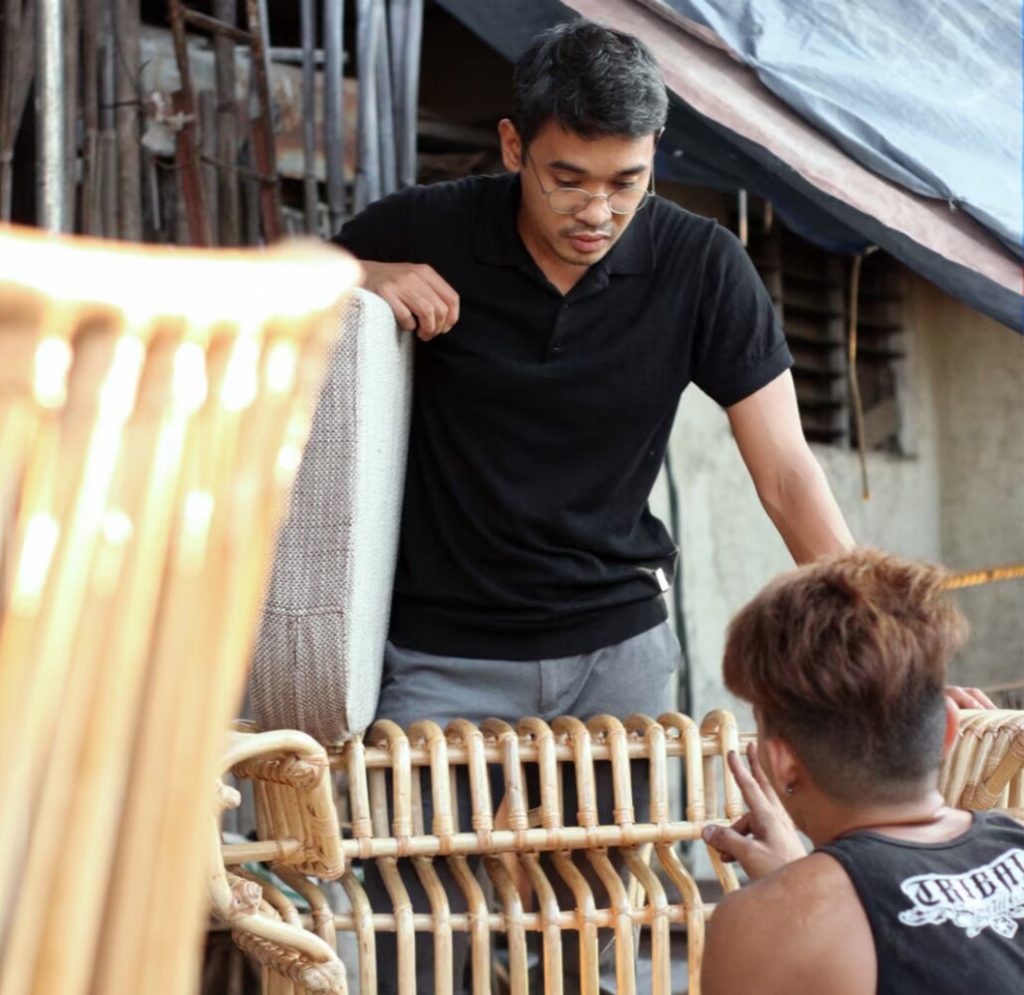RHIA GRANA

The Pabo chair of Cielo Fiero was originally commissioned by celebrity hairstylist Jing Monis.
If you’ve been watching the revenge drama “Dirty Linen,” chances are you may have caught the powerful-looking Pabo chair in Doña Cielo Fiero’s (Tessie Tomas) room. Some people thought it was inspired by the adventure fantasy series “Game of Thrones” but the chair’s designer, the architect Jed Yabut, says it’s a contemporary reimagination of the Peacock Chair which was popularized by PDLs (persons deprived of liberty) in Bilibid back in the 1900s.


The Pabo chair was actually commissioned work for celebrity hairstylist Jing Monis. “[Jing] wanted a Peacock Chair, but not the traditional one,” Yabut recalls. So what the architect-turned-furniture designer did was make the Peacock more masculine. “But it still has the feel of a throne,” he offers.
Meanwhile, Dreamscape Entertainment head Deo Endrinal, a fan of Yabut’s work, instructed the show’s production designer Nancy Arcega to check out some of the designer’s pieces for “Dirty Linen.” And that’s how the Pabo chair made it to local TV’s most talked about series.

Like the original Peacock Chair, the Pabo is also made of rattan. In fact, Yabut, who started his furniture business during the pandemic, specializes in making contemporary rattan furniture. “I chose a material that has a lot of nostalgia in it,” he tells us. “Back in the 1980s, sobrang nag-boom ang rattan furniture in the Philippines and globally.”
Over time, however, furniture made from different materials came in, including plastics from China, and these eclipsed the popularity of rattan. “I chose to specialize in rattan because I want to also bring it back in fashion,” he tells ANCX. But Yabut wanted to make his works more modern and edgy, conversation pieces that emphasize “random patterns and varied textures as an homage to the Filipino sensibilities of ‘beautiful chaos’ and resourcefulness…I didn’t want to make it look like it’s the traditional rattan furniture that we are all familiar with, so I added twists and lots of geometric shapes.”

To highlight the Filipino-ness of his creations, he named his pieces alon, ati-atihan, bakawan, bunot, pugad, salbabida, tinikling, trumpo, and so on. “Apart from the nostalgia that I want to bring into the minds of users and lookers, gusto ko rin makita nila na yung mga shapes ng mga designs natin are based from Filipino icons,” he says, adding that the “exoticism of the word may also spark interest in the global furniture scene.”
To reinforce the durability of his pieces, Yabut uses metal framing, which are covered with rattan skin and rattan peel. The Pabo chair, for instance, has metal frames at the back and bottom. He also uses only locally supplied wood and raw materials. “We make sure that our pieces are 100% Philippine produced,” he says.

Yabut earned a degree in Architecture at the University of the Philippines. After graduating from college, he worked for eight years at Architect 61, one of the big architectural firms in Singapore involved in building skyscraper projects.
The Manila-born Yabut later worked at Nikken Sekkei, the largest architectural firm in Japan and believed to be third largest in the world. There, he worked mostly on hospitality projects like the Four Seasons Hotel and a ski resort in Hanazono, Hokkaido. While in Japan, he completed his Master of Business Administration, already entertaining thoughts of switching to business consultancy.

Fate, however, had other plans. Just as he was hired to work for Japanese real estate company Mitsubishi Estate in Singapore, the pandemic hit. He went home to the Philippines thinking the situation would normalize in two or three months but it didn’t. That’s when he thought of creating a furniture line in the Philippines.
“It was not in my wildest dreams, not in a three- or five-year horizon, that I planned on becoming a furniture designer,” the 37-year-old architect tells us.
Thru the advice of his Chinese classmate in MBA, Yabut started his furniture business at the height of the pandemic. “We have a saying in Chinese that, ‘thriving and successful businesses are born during years of crisis,’” he recalls his friend saying. He designed his first collection in July of 2020 and launched it December the same year.

Yabut’s company has been doing well since. “I don’t have the numbers but I felt like nag-spike ang demand for rattan furniture during the pandemic,” he says. “That’s because I think people wanted to feel more connected with nature, with organic things, with wood since we were all enclosed in our spaces.”
Yabut says furniture makers these days are mostly in their 40s and 50s. So to help preserve the legacy of rattan furniture making in the Philippines, he hires and trains younger artisans. “Ang maganda sa mga bata mabilis silang matuto. In as much as I want to support our [older] artisans, feeling ko I need now to step up in trying to explore and teach the younger generation about it.”

Yabut’s modern rattan furniture pieces can be seen at Angkan Coffee Company, SM North The Block Food Hall, Mugna Cafe Bohol, and Lihim Resorts El Nido. He’s also currently working on outdoor pieces for Pia Wurtzbach’s personal lanai, including what he named the “Binibini” chair, “an outdoor piece with organic lines and graceful silhouette befitting a queen.” It looks like this erstwhile architect is becoming the maker of seats of power.
Photos courtesy of Jed Yabut
Source: https://news.abs-cbn.com/ancx/culture/spotlight/03/12/23/the-designer-behind-doa-cielos-throne-in-dirty-linen
